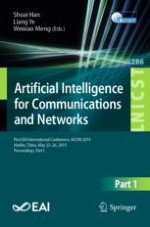2019 | OriginalPaper | Chapter
IOT-Based Thermal Comfort Control for Livable Environment
Authors : Miao Zang, Zhiqiang Xing, Yingqi Tan
Published in: Artificial Intelligence for Communications and Networks
Publisher: Springer International Publishing
Activate our intelligent search to find suitable subject content or patents.
Select sections of text to find matching patents with Artificial Intelligence. powered by
Select sections of text to find additional relevant content using AI-assisted search. powered by
